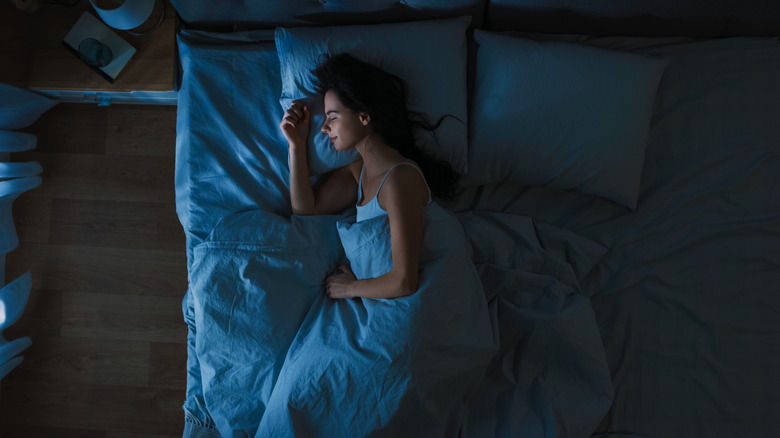Light is a form of electromagnetic radiation, according to NASA. There are many spectrums of light, but the human eye can only detect a portion of it. The light that you can see is called visible light. The visible spectrum of light ranges from violet, which consists of 380 nanometers to red with 700 nanometers. All of your other favorite colors of the rainbow fall somewhere in between. There’s an interesting and colloquially counter-intuitive relationship between temperature and light color. You may be familiar with the term “red hot.” Turns out that phrase is a bit of a misnomer. As objects get hotter, they actually output shorter wavelengths, eventually turning blue. That’s why the base of a standard lighter’s flame is blue.
While light occurs naturally, humans have crafted ways to produce artificial light. That’s a good thing because when there’s less natural light, like during winter months, it can affect some people’s mental health by disrupting the body’s circadian rhythms (per Cleveland Clinic). That’s where light therapy can help. In particular, blue light therapy may help treat seasonal depression, especially if you use the light therapy box in the morning, which is the recommended time of day to use light therapy. In fact, recent research reveals that blue light therapy may also help reduce symptoms of post-traumatic stress disorder (PTSD). Here’s everything you need to know.
Blue light therapy and PTSD symptoms

A 2024 study published in the journal Frontiers in Behavioral Neuroscience explored whether or not a morning session of blue light therapy could help assuage symptoms of post-traumatic stress disorder (PTSD). The participants received a 30-minute morning session of blue light therapy over the course of six weeks. Researchers found that the half hour of blue light therapy in the morning improved sleep time and some facets of sleep quality, which were associated with improved symptoms of PTSD, as well as increased volume in the brain region known as the amygdala, reports Medical News Today.
Keep in mind, the amygdala plays a central role in the brain’s threat detection and fight or flight response (per Psychology Today). In fact, a 2024 study published in the journal Frontiers in Neurology found that exposure to one 30-minute session of blue light wavelengths can increase the connection between the amygdala and part of the prefrontal cortex. The results showed the mechanisms behind how blue light therapy can help improve mood by contributing to the regulation of arousal.



